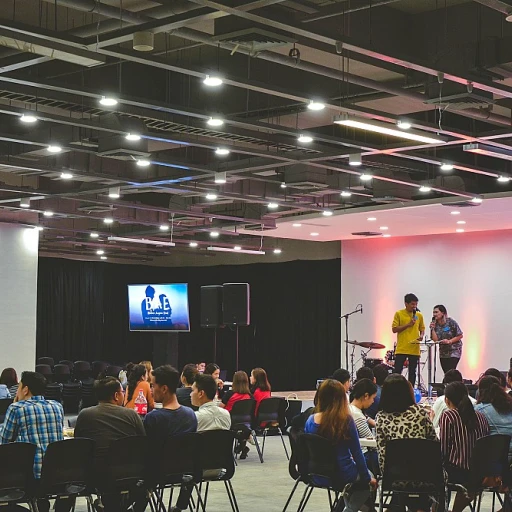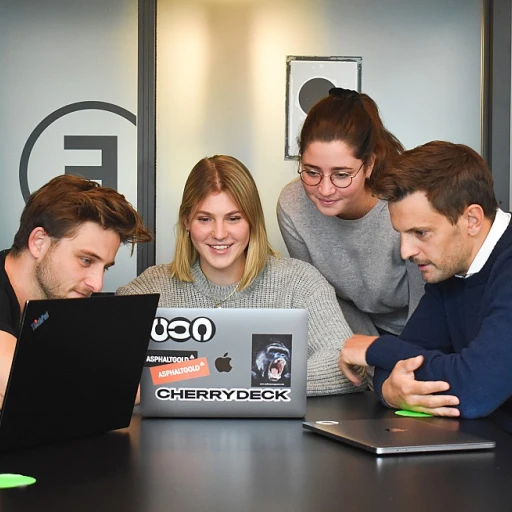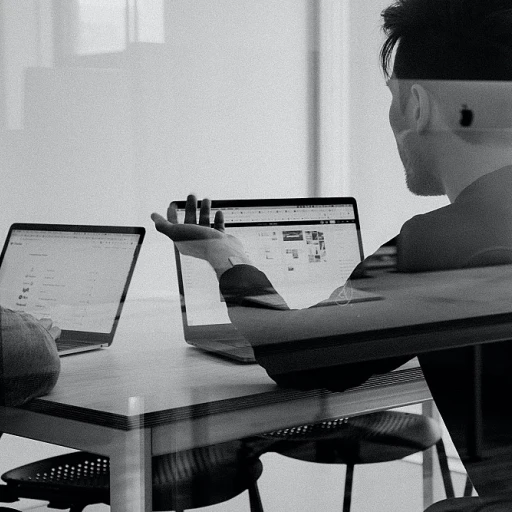- Employee Satisfaction Surveys: Regular surveys help gauge how employees feel about their work environment, culture, and the tools they have at their disposal. An improvement in satisfaction scores can be a direct indicator of successful workplace experiences.
- Turnover Rates: A decrease in employee turnover often signals that employees are engaged and satisfied with their workplace, consequently reflecting a positive company culture.
- Absenteeism: Tracking absenteeism rates offers insights into the general well-being of employees. Lower absenteeism can indicate higher engagement and a healthier work-life balance.
- Employee Productivity: Enhanced workplace experiences often lead to improved employee productivity. This can be analyzed through performance metrics, allowing managers to identify whether improvements in the work environment have positively influenced work output.
- Feedback Channels: Open and effective communication channels are vital. Employee feedback on work culture, office environment, and hybrid work policies can directly reflect on the engagement levels.
Understanding Workplace Experience
Deciphering Employee Experiences in the Workplace
Understanding workplace experience is pivotal in unraveling how employees perceive their daily work life. The workplace environment is not just about the physical office; it encompasses digital tools, company culture, and even air quality. By delving deep into the workplace experience, organizations can foster employee satisfaction and engagement. Every employee encounters unique workplace experiences influenced by various factors. These include the design and layout of the physical space, which affects how comfortable employees feel, and the communication strategies employed by the organization. Well-crafted communication strategies can significantly improve workplace engagement by ensuring clear, effective interaction among the team. When companies prioritize workplace technology in their evaluation of prospective employees , the resulting employee experience is often enhanced as technology streamlines tasks and facilitates seamless hybrid work models. For experience managers, focusing on these elements is essential when designing strategies to boost employee engagement. In the broader scope, a positive workplace culture and strategic workplace experiences are tightly intertwined, creating an environment where employees thrive. Companies with a great workplace strategy often see a direct impact on employee engagement levels. Additionally, employee experience managers play a crucial role in crafting environments that not only engage but also nurture the potential of each individual. Ultimately, effective workplace strategies require an understanding of the many facets of workplace experience, including both physical environment and corporate culture. The goal is to create a cohesive atmosphere where employees feel valued and are motivated to perform at their best.Trends Shaping Workplace Experience
Current Workplace Trends
In recent years, significant trends have emerged, reshaping how we think about workplace experiences. These trends focus on enhancing employee engagement and transforming the traditional work environment into a more adaptive and people-centric space.- Hybrid Work Models: Increasingly popular, hybrid work balances the flexibility of remote work with in-office collaboration. This model allows employees to tailor their work schedules, leading to improved work-life balance and overall job satisfaction.
- Emphasis on Well-being: Companies are recognizing the importance of employee well-being, integrating health initiatives and wellness programs into their workplace strategy. This focus not only boosts engagement but also contributes to a positive workplace culture.
- Enhanced Work Environments: Innovations in office design cater to employee comfort and productivity. From ergonomic furniture to optimized air quality, attention to the physical work environment is a key factor in shaping positive workplace experiences.
- Technology Integration: As workplace technology evolves, companies leverage digital tools to improve communication and collaboration. These tools enable employees to work efficiently, whether they're in-office or remote.
- Focus on Employee Feedback: Increasing engagement often involves listening to employee feedback. Companies use this input to refine their workplace strategy and cultivate a great workplace where employees feel valued and heard.
The Role of Technology in Enhancing Workplace Experience
The Power of Digital Tools in the Modern Office
The modern workplace has experienced a significant transformation with the advent of technology, redefining how companies approach their employee engagement strategies. Digital tools now play a crucial role in shaping the employee experience, bridging the gap between the physical and digital domains within the organization.
Companies leverage communication platforms to maintain a seamless connection with remote and hybrid employees, fostering an environment where everyone feels included. This digital shift has empowered employees to collaborate more effectively, regardless of their physical location. Platforms like Slack, Microsoft Teams, and Zoom have become staples in the work environment, ensuring that communication remains uninterrupted and efficient.
Moreover, technology has also improved workplace experiences by enhancing the physical environment. Sensors can monitor air quality and lighting conditions, making adjustments to ensure optimal well-being for those in the office. Smart office solutions enable companies to create flexible workspaces that cater to various tasks and preferences, further boosting employee satisfaction.
For experience managers, the integration of modern technology is not just about keeping up with trends but truly enhancing the work life of employees. This focus on digital transformation aligns with the broader workplace strategy, aiming to create a great workplace that is adaptable to change. To explore further, the importance of understanding the cost of building a health and wellness brand in this context cannot be underestimated.
Creating a Positive Organizational Culture
Fostering a Supportive and Inclusive Atmosphere
Creating a positive organizational culture is essential for enhancing the overall workplace experience. A supportive and inclusive environment encourages employees to thrive, enhancing their engagement and satisfaction with their work. This section delves into the key aspects of fostering such a culture.
Open communication is vital in cultivating a positive organizational atmosphere. By promoting an environment where employees feel comfortable sharing their ideas and concerns, companies can foster a sense of belonging and inclusivity. Encouraging feedback and actively listening to employees' voices can create an environment where they feel valued and respected.
Building on Diversity and Inclusion
An organization that values diversity and inclusion creates a workplace where varied perspectives and experiences are welcomed. By embracing different backgrounds, companies gain a wealth of knowledge that can drive innovation and growth. Building a diverse and inclusive culture requires ongoing efforts to eliminate biases, promote equal opportunities, and celebrate differences.
Empowering through Leadership and Development
Leadership plays a pivotal role in influencing workplace culture. Leaders who demonstrate empathy, transparency, and authenticity inspire trust and loyalty among employees. Providing opportunities for professional development and growth further enhances employee satisfaction, as it shows the organization’s commitment to their career advancement.
In the context of hybrid work arrangements, effective communication becomes even more crucial. Utilizing digital tools to maintain connection and collaboration ensures that remote and in-office employees remain engaged and informed. This hybrid work strategy can contribute to a positive workplace environment by accommodating diverse work preferences.
Ultimately, the aim is to create a supportive, inclusive, and engaging culture where employees can thrive, leading to improved productivity and a great workplace experience. Understanding and addressing these cultural elements can significantly enhance employee engagement, influencing the company’s overall success.
Measuring the Impact of Workplace Experience on Employee Engagement
Metrics that Reveal the Impact of Workplace Experience
Case Studies: Successful Employer Branding through Improved Workplace Experience
Illustrative Successes in Employer Branding Through Enhanced Workplace Experience
In recent years, some pioneering companies have demonstrated the transformative power of optimizing workplace experience to bolster their employer branding. These organizations have successfully woven elements of technology, a positive culture, and environment-focused strategies to create workspaces that resonate with innovation and inclusivity. Let's explore how these companies have effectively enhanced employee engagement.- Revamping Physical and Digital Work Spaces: By investing in cutting-edge workplace technology and creating hybrid work environments, some organizations have set new benchmarks in offering an enhanced experience workplace. In practice, this has included providing employees with modern tools and ensuring seamless communication, whether they are working digitally or in-office. The results are telling, with increased employee satisfaction and a greater sense of community.
- Encouraging a Strong Company Culture: Companies that excel in employer branding are those that cultivate an environment where employees feel valued and empowered. This involves acknowledging the importance of openness, creativity, and support within the workplace culture. Such efforts not only improve workplace dynamics but also lead to a more cohesive and motivated workforce.
- Prioritizing Well-being and Environment: Proactive companies have recognized the importance of air quality and general work-life balance, understanding that these factors directly impact employee well-being. Improvements in the work environment, whether through ergonomic office design or initiatives for mental health, contribute significantly to positive workplace engagement.














